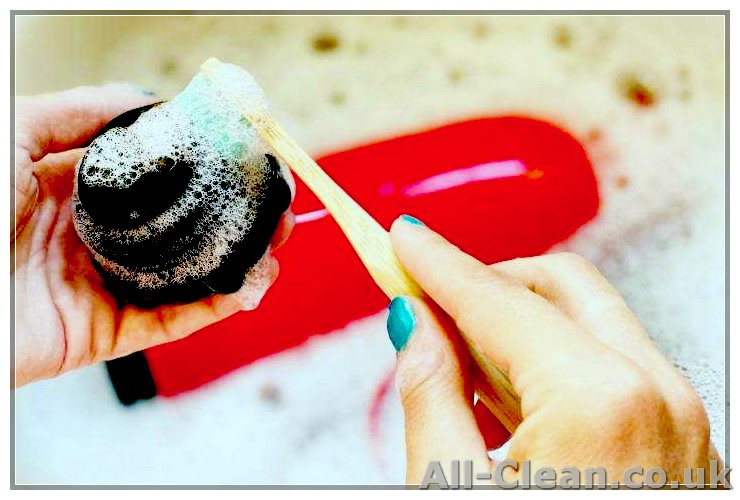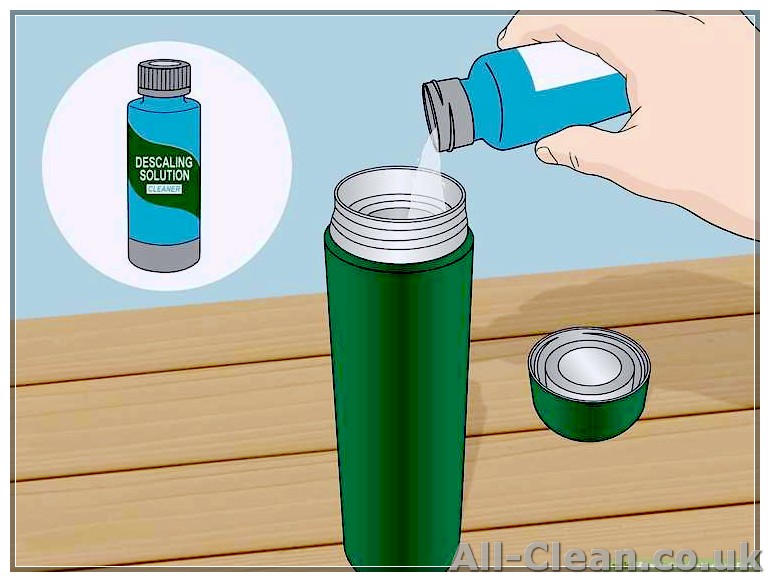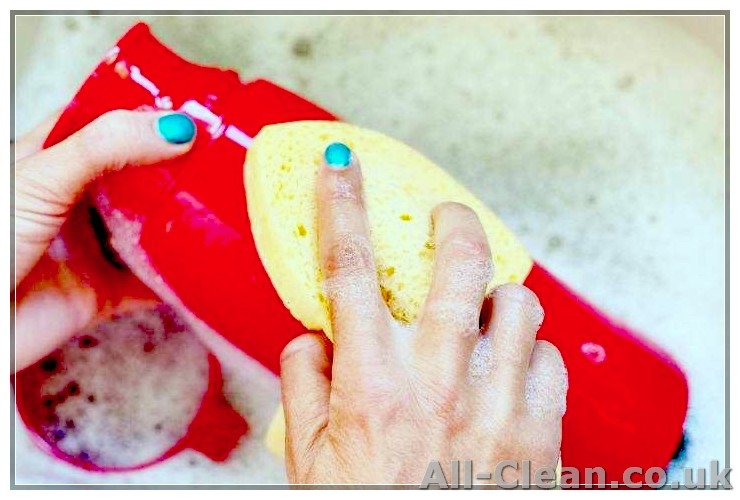
If you’re someone who enjoys using a flask to keep your drinks hot or cold on the go, it’s important to keep it clean and free of any unpleasant odors or tastes. Over time, flasks can develop a build-up of limescale or other residue, which can affect the flavor of your drinks.
There are many easy and effective ways to clean your flask, and in this article, we’ll explore three popular methods: using bicarbonate of soda (bicarb), rice, or vinegar. These household items are inexpensive and can be found in most homes, making them convenient and accessible options for cleaning your flask.
If you choose to use bicarb, simply mix a teaspoon of it with warm water and pour it into your flask. Shake the flask gently to ensure that the mixture covers all areas, and let it sit for about 15 minutes. Then, empty the flask and wash it with warm soapy water. This method is great for removing odors and stains, and bicarb is a mild and biodegradable option, making it safe for the environment.
Rice is another excellent option for cleaning a flask. Fill the flask about halfway with uncooked rice, and then fill it the rest of the way with warm soapy water. Screw the lid on tightly and shake the flask vigorously for a few minutes. The rice acts as an abrasive, scrubbing away any residue or buildup on the inside of the flask. Once you’re done, simply pour out the rice and rinse the flask with warm water.
Vinegar is a versatile cleaning agent that is known for its powerful disinfecting properties. To clean your flask with vinegar, fill it about one-third of the way with white vinegar and the rest of the way with warm water. Let the mixture sit in the flask for about 15 minutes, then give it a good shake and pour it out. Rinse the flask thoroughly with warm water to remove any vinegar residue, and your flask will be clean and odor-free.
Regardless of the method you choose, it’s important to always wash your flask with warm, soapy water after cleaning it to ensure that all cleaning agents are fully removed. Additionally, be sure to check the manufacturer’s instructions and guidelines, as some flasks may not be dishwasher-safe or may require special cleaning procedures.
By following these easy and effective cleaning methods, you can keep your flask looking and smelling fresh, so you can continue to enjoy your favorite hot or cold beverages on the go. Whether you’re hiking up a mountain or simply walking to work, a clean flask is an essential companion that will keep your drinks at the perfect temperature.
- Simple Steps to Clean a Flask with Bicarb, Rice, or Vinegar
- Method 1: Bicarbonate of Soda
- Method 2: Rice
- Method 3: Vinegar
- Cleaning a Flask with Bicarbonate of Soda
- Materials:
- Instructions:
- Using Rice to Clean a Flask
- What you’ll need:
- Instructions:
- Effective Cleaning with Vinegar
- Frequently Asked Questions: How to Clean a Thermos Flask
- 1. Can I use the same cleaning method for all types of flasks?
- 2. How often should I clean my thermos flask?
- 3. What cleaning materials can I use for my flask?
- 4. Can I use hot water to clean my flask?
- 5. How do I clean a flask with baking soda?
- 6. Can I clean a flask with rice?
- 7. Is vinegar effective for cleaning thermos flasks?
- 8. How do I clean a thermos flask with hard-to-reach stains?
- 9. Can I clean the straw of my thermos flask?
- 10. Can I wash the thermos flask in a dishwasher?
Simple Steps to Clean a Flask with Bicarb, Rice, or Vinegar
Cleaning your hiking flask is essential to maintain its performance and provide safe drinking water during your outdoor adventures. There are several easy and effective ways to clean your flask using basic household items like bicarbonate of soda (bicarb), rice, or vinegar. In this article, we will guide you through the simple steps to clean your flask with these versatile cleaning agents.
Method 1: Bicarbonate of Soda

- Start by rinsing your flask with warm water to remove any loose dirt or residue.
- Add a teaspoon of bicarbonate of soda to the flask and fill it up with warm water.
- Give it a good shake to ensure the bicarb mixes well with the water.
- Allow the mixture to sit in the flask for about 15 minutes to break down any stains or odors.
- After 15 minutes, give the flask a thorough rinse with warm water to remove the bicarb solution.
- Let the flask air dry completely before using it again.
Method 2: Rice
- Rinse your flask with warm water to remove any dirt or residue.
- Add 2 tablespoons of rice to the flask.
- Fill the flask halfway with warm water.
- Secure the stopper or lid tightly and shake the flask vigorously for 1-2 minutes.
- Empty the rice and water mixture from the flask.
- Rinse the flask thoroughly with warm water to remove any remaining rice particles.
- Air dry the flask completely before using it again.
Method 3: Vinegar
- Rinse your flask with warm water.
- Add equal parts of water and vinegar to the flask, filling it halfway.
- Secure the stopper or lid tightly and shake the flask gently to allow the vinegar solution to reach all areas.
- Let the vinegar solution sit in the flask for about 10 minutes to dissolve any stubborn stains.
- Rinse the flask thoroughly with warm water to remove the vinegar solution.
- Air dry the flask completely before using it again.
Remember, always follow the manufacturer’s instructions for cleaning your specific flask model, as some may have specific cleaning requirements. These three methods are generally suitable for most types of stainless steel or BPA-free plastic flasks.
Cleaning your flask regularly, preferably after each use, will help maintain its performance and extend its lifespan. By following these simple cleaning steps, you can ensure that your flask is always ready for your next hiking, camping, or outdoor adventure!
Cleaning a Flask with Bicarbonate of Soda
If you are looking for an easy and effective way to clean your flask, using bicarbonate of soda might just be the solution you need. This simple cleaning method can eliminate odors and stains, leaving your flask looking and smelling fresh.
Materials:
- Bicarbonate of soda (also known as baking soda)
- Warm water
- Dish soap
- A soft sponge or cloth
Instructions:

- Start by rinsing your flask with warm water.
- Next, add a tablespoon of bicarbonate of soda to your flask.
- Fill the flask with warm water, leaving some space at the top for the solution to react.
- Add a few drops of dish soap to the mixture for extra cleaning power.
- Use a soft sponge or cloth to gently scrub the inside of the flask, paying extra attention to any stained areas.
- Allow the solution to sit in the flask for about 15-30 minutes to let the bicarbonate of soda break down any residues.
- Rinse the flask thoroughly with warm water to remove any remaining residue.
- Dry the flask with a clean towel or let it air dry before using or storing it.
This method is particularly effective for cleaning stainless steel flasks, as it helps to remove stains and eliminate odors without scratching the surface. Additionally, bicarbonate of soda is a natural and eco-friendly cleaning agent, making it a great choice for those who prefer non-toxic cleaning options.
Remember to always check the manufacturer’s instructions for your specific flask, as some flasks may not be dishwasher-safe or may require special cleaning procedures. In general, cleaning your flask with bicarbonate of soda is a simple and effective method that can help keep your flask in pristine condition for many future adventures.
Using Rice to Clean a Flask
If you’re looking for a quick and easy way to clean your flask, using rice can be a great option. Rice is a common household ingredient that can help remove stains, odors, and build-up from your flask. This method is especially useful for flasks with narrow openings or delicate materials that may be difficult to clean with other tools.
What you’ll need:
- A flask that needs cleaning
- Rice
- Warm water
- Optional: mild dishwashing soap
Instructions:
- Start by emptying your flask of any remaining liquid or food.
- Fill the flask about one-third full with uncooked rice.
- Add warm water to the flask until it’s almost full.
- If desired, you can also add a few drops of mild dishwashing soap to the water for extra cleaning power.
- Gently swirl the flask to agitate the rice and water mixture. The rice will act as an abrasive and help to remove stains and residue from the flask.
- For more stubborn stains or odors, you can let the rice and water mixture sit in the flask for a few minutes.
- After swirling or soaking, empty the rice and water mixture from the flask.
- Rinse the flask thoroughly with warm water to remove any leftover rice or residue.
- Allow the flask to air dry completely before storing or using it again.
Note: While this method is generally safe for most flasks, it’s always a good idea to check the manufacturer’s guidelines or consult their customer support to ensure that rice cleaning is suitable for your specific flask.
Using rice to clean a flask is an easy and effective way to remove stains and odors without the need for harsh chemicals or special cleaning tools. Give it a try, and your flask will be clean and ready to use in no time!
Effective Cleaning with Vinegar
Vinegar is a versatile and effective cleaning agent that can be used in many household cleaning tasks. When it comes to cleaning a flask, vinegar is a great option that can easily remove stains and odors. Here’s how to effectively clean your flask with vinegar:
- First, gather your supplies. You will need white vinegar, warm water, and a cleaning brush or sponge.
- Start by emptying your flask of any liquid or residue.
- Mix a solution of equal parts white vinegar and warm water. For example, you can use one cup of vinegar and one cup of water.
- Pour the vinegar and water solution into the flask, filling it about halfway.
- Swirl the flask gently to ensure that the solution reaches all surfaces inside.
- Let the vinegar solution sit in the flask for at least 15 minutes. This will allow the vinegar to break down any stains or odors.
- After the vinegar solution has had time to work, use a cleaning brush or sponge to scrub the inside of the flask.
- Pay special attention to areas that may have buildup, such as the bottom or the opening of the flask.
- Rinse the flask thoroughly with warm water to remove any vinegar residue.
- Leave the flask open and upside down to air dry.
Using vinegar for cleaning is a safe and natural alternative to harsh chemical cleaners. It is also biodegradable, making it an environmentally friendly option. Vinegar can effectively remove dirt, stains, and odors, leaving your flask clean and ready to use again.
If you have any concerns about using vinegar on your flask, here are some commonly asked questions:
- Can I use vinegar to clean glass flasks?
- How often should I clean my flask with vinegar?
- Can vinegar remove coffee stains from my flask?
- Is vinegar safe to use on stainless steel flasks?
- What is the best type of vinegar to use?
Yes, vinegar is safe to use on glass flasks. However, avoid using vinegar on any flasks with a non-glass exterior, as vinegar may cause damage.
It is recommended to clean your flask with vinegar every few weeks or as needed. If you notice any stains or odors, it’s a good idea to give it a cleaning.
Yes, vinegar is effective at removing coffee stains. Simply follow the instructions above and let the vinegar solution sit in the flask for a longer period of time, such as an hour, before scrubbing.
Yes, vinegar is safe to use on stainless steel flasks. However, be sure to rinse it thoroughly to prevent any lingering vinegar smell.
White vinegar is the most commonly used vinegar for cleaning. However, you can also use apple cider vinegar or other types of vinegar if that’s what you have on hand.
Using vinegar to clean your flask is a simple and effective method. It can help remove stains and odors, making your flask look and smell great. Give it a try and see the difference it makes!
Frequently Asked Questions: How to Clean a Thermos Flask
1. Can I use the same cleaning method for all types of flasks?
No, different types of flasks may require different cleaning methods. The cleaning techniques discussed in this article can be applied to most thermos flasks, but it is always recommended to refer to the manufacturer’s instructions for specific cleaning guidelines.
2. How often should I clean my thermos flask?
It is best to clean your thermos flask after each use to prevent any build-up of stains or odors. Regular cleaning will ensure that your flask remains hygienic and in good condition.
3. What cleaning materials can I use for my flask?
There are several cleaning materials you can use for your flask, depending on your preferences and the level of cleaning required:
- Bicarbonate of soda (baking soda)
- Rice
- Vinegar
- Dish soap
4. Can I use hot water to clean my flask?
Yes, hot water can be used for cleaning a thermos flask, especially if it contains stains or odors. Hot water helps to loosen any residue and makes it easier to clean. Just make sure that the thermos is suitable for hot liquids and that you can handle the hot water safely.
5. How do I clean a flask with baking soda?
To clean a flask with baking soda, follow these steps:
- Fill your flask with hot water.
- Add a tablespoon of baking soda to the flask.
- Let the mixture sit for a few hours or overnight.
- Empty the flask and rinse it thoroughly with clean water.
6. Can I clean a flask with rice?
Yes, rice can be used to clean a flask. Follow these steps:
- Fill your flask with warm water.
- Add a few tablespoons of uncooked rice to the flask.
- Close the lid tightly and shake the flask vigorously for a few minutes.
- Empty the flask and rinse it thoroughly with clean water.
7. Is vinegar effective for cleaning thermos flasks?
Yes, vinegar can be used to clean thermos flasks. Here’s how:
- Fill your flask with equal parts vinegar and water.
- Let the mixture sit for a few hours or overnight.
- Empty the flask and rinse it thoroughly with clean water.
8. How do I clean a thermos flask with hard-to-reach stains?
If your thermos flask has stains that are hard to reach, you can try using a combination of cleaning materials and a long brush or sponge. Alternatively, you can use a cleaning tablet specifically designed for thermos flasks, following the manufacturer’s instructions.
9. Can I clean the straw of my thermos flask?
If your thermos flask has a straw or drinking spout, it is important to clean it regularly to prevent bacteria growth. You can use a small brush or pipe cleaner along with soap and hot water to clean the straw thoroughly.
10. Can I wash the thermos flask in a dishwasher?
Most thermos flasks are not dishwasher-safe and should be washed by hand. Check the manufacturer’s instructions to ensure the dishwasher safety of your specific flask. Washing the flask in a dishwasher may cause damage to its insulation or other components.








